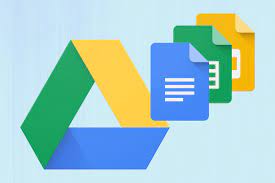Google Docs is a free web-based word processing application offered by Google. It allows users to create, edit, and format documents online, as well as collaborate with others in real-time
Creating a Document:
- To start a new document, go to the Google Docs website (docs.google.com) and sign in to your Google account.
- Click on the “+ Blank” button, or go to “File” > “New” > “Document” to create a new blank document.
Editing a Document:
- Once you have a document open, you can start typing and editing the content just like in a regular word processor.
- Use the toolbar at the top of the page to access various editing options, such as changing the font style, size, and color, applying bold, italic, or underline formatting, and aligning text.
Formatting a Document:
- To format the overall appearance of your document, you can modify the document settings. Go to “File” > “Page setup” to adjust page margins, orientation, and paper size.
- You can also format specific sections of your document by selecting the desired text and using the toolbar options. For example, you can apply heading styles, create bulleted or numbered lists, adjust line spacing, and add indentation.
- Additionally, you can insert images, tables, links, and other elements into your document using the “Insert” menu.
Collaboration:
- One of the key features of Google Docs is the ability to collaborate with others in real-time. To invite others to collaborate on your document, click on the “Share” button in the top-right corner.
- You can then enter the email addresses of the people you want to share the document with and choose the level of access they have (view, comment, or edit).
- Collaborators can simultaneously work on the document, and their changes are automatically saved and synced in real-time.
Version History:
- Google Docs automatically saves your document as you work, allowing you to access previous versions of your document.
- To view the version history, go to “File” > “Version history” > “See version history.” You can see a list of saved versions and restore or copy content from previous versions if needed.
These are just some of the basic features of Google Docs. The application offers many more advanced features, such as adding headers and footers, creating and using templates, and integrating with other Google services like Google Drive and Google Sheets.
Some additional features and tips for working with Google Docs:
- Collaboration Tools:
- Real-time Editing: Multiple users can edit a document simultaneously, and changes are synced in real-time.
- Comments: Add comments to specific parts of the document to provide feedback or have discussions with collaborators. Use the comment button in the toolbar or right-click on selected text.
- Suggesting Mode: Instead of directly editing the document, you can enable Suggesting mode. This allows collaborators to make suggestions that can be accepted or rejected by the document owner.
- Document Organization:
- Folder Structure: Create folders in Google Drive to organize your documents. You can move documents into specific folders or create new ones directly from Google Docs.
- Document Versioning: Google Docs automatically saves revisions, so you can access and restore previous versions of your document if needed.
- Offline Access:
- Install the Google Docs offline extension for the Chrome browser to access and edit documents without an internet connection. Changes made offline will sync when you’re back online.
- Add-Ons and Templates:
- Add-Ons: Extend the functionality of Google Docs by installing add-ons. These are third-party tools that provide additional features, such as citation management, grammar checking, and document signing.
- Templates: Access a wide range of pre-designed document templates by going to “File” > “New” > “From template.” Templates are available for various purposes, including resumes, reports, presentations, and more.
- Research and Citations:
- Research Tools: Use the research tool to find and insert information from the web directly into your document. Access it through “Tools” > “Explore” or by right-clicking on selected text.
- Citations: Google Docs offers a built-in citation generator that allows you to easily add citations and bibliographies to your document. Access it through “Tools” > “Citations.”
- Keyboard Shortcuts:
- Speed up your workflow with keyboard shortcuts. To view a list of available shortcuts, press “Ctrl + /” (Windows) or “Command + /” (Mac).
Remember to regularly save your documents to ensure your work is safely stored. Google Docs automatically saves changes, but it’s always a good idea to manually save as well.
Google Docs is a versatile word processing tool that offers numerous features to enhance collaboration, organization, and productivity. Exploring the various options and tools available can help you make the most of this powerful online document editor.
